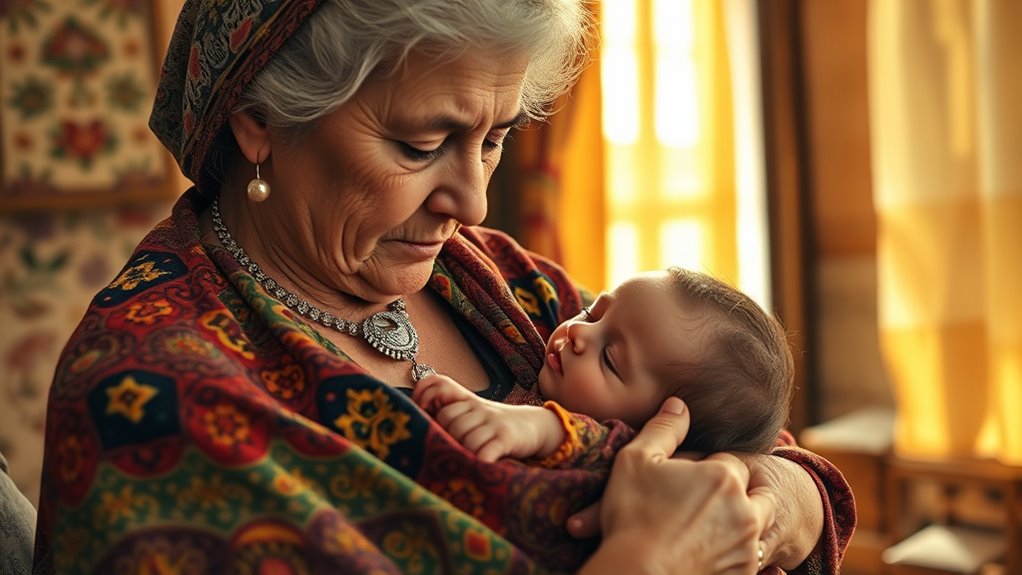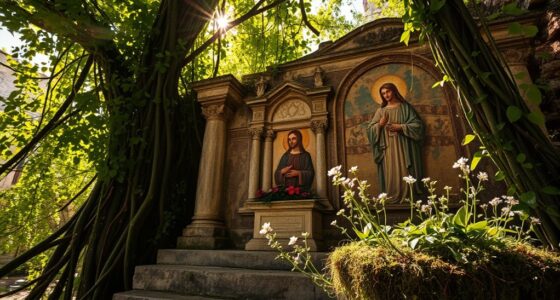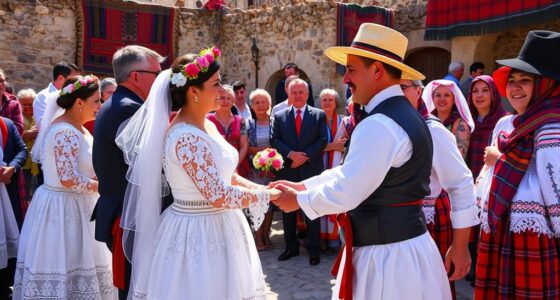Sardinian lullabies are rich in regional traditions and symbolic meanings, often invoking saints for protection and using natural and celestial imagery to soothe children. They incorporate unique vocal techniques and regional instruments, reflecting the island’s diverse cultural influences. These songs serve to strengthen community bonds, preserve local dialects, and convey stories rooted in history and folklore. If you keep exploring, you’ll uncover more about their deep cultural significance and ongoing efforts to keep them alive.
Key Takeaways
- Sardinian lullabies invoke saints and spiritual symbols to provide divine protection and comfort during a child’s sleep.
- They often incorporate natural and celestial imagery, representing safety, serenity, and the transition into sleep.
- Themes include maternal care, social tensions, and mythological guardianship, blending cultural beliefs with everyday life.
- Regional variations reflect dialectal differences and local musical styles, influencing the song’s tone and instrumentation.
- These lullabies serve as a vital cultural tradition, preserving Sardinian identity, language, and collective memory across generations.
Origins and Cultural Significance

The origins of Sardinian lullabies are deeply rooted in the island’s ancient history, reflecting a rich tapestry of cultural influences. You can trace Sardinian roots back to the Prenuragic and Nuragic eras, when indigenous societies thrived on the island. The word *s(a)rd* may stem from the Sherden, one of the Sea Peoples, or mythological figures from Anatolia and Libya, highlighting external contacts. Connections with Etruscan language and culture further shaped these traditions, blending different Mediterranean elements. The etymology remains uncertain, emphasizing Sardinia’s layered history. These ancient roots likely gave rise to lullabies as cultural expressions, passing down stories, fears, and beliefs through generations. Their continuity shows how Sardinian oral traditions preserve the island’s unique identity and historical memory. Additionally, the influence of Mediterranean cultural exchanges contributed to the diversity of themes found in Sardinian lullabies, enriching their symbolic meanings.
Musical Style and Techniques
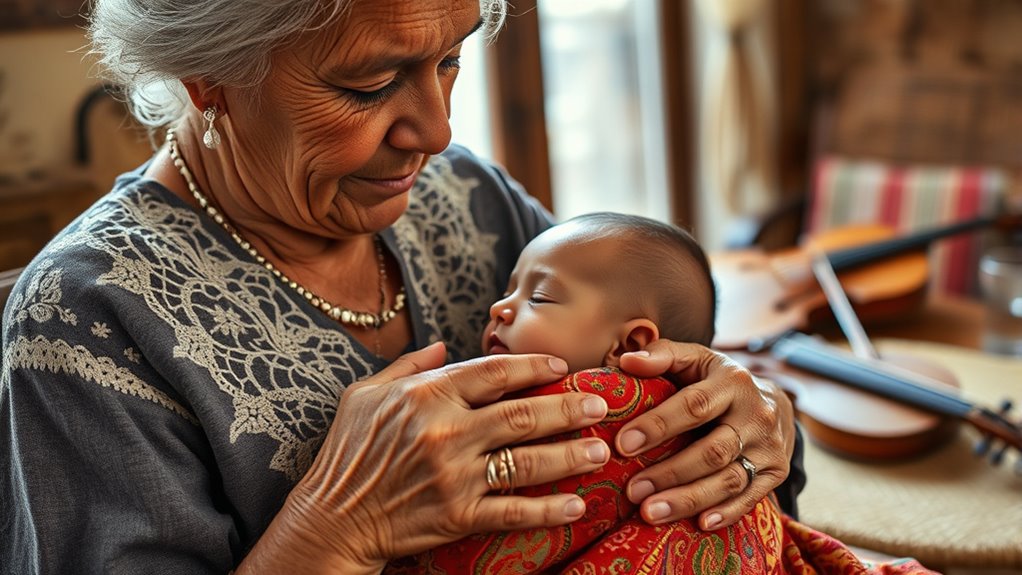
| Voice Type | Role | Technique |
|---|---|---|
| ‘oche | Solo lead | Monodic singing |
| mesu ‘oche | Half voice, wind sounds | Regular vocal techniques |
| contra | Counter, animal sounds | Guttural, laryngeal manipulation |
| bassu | Bass, animal sounds | Deep, guttural singing |
| The use of diverse vocal techniques reflects the rich cultural heritage of Sardinian music.
Common Themes and Symbolism
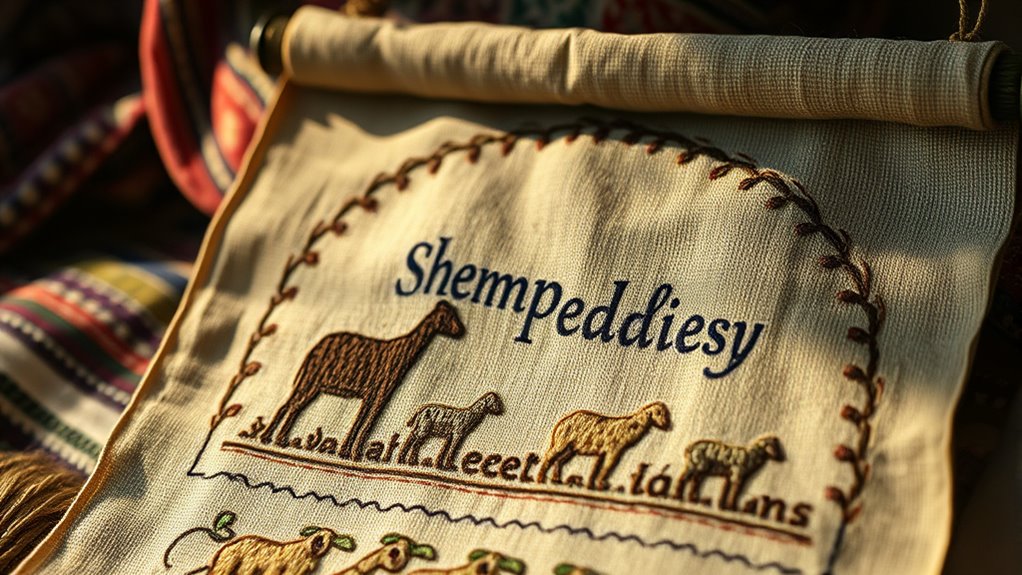
Sardinian lullabies are rich with symbolic imagery that reinforces both protection and comfort during a child’s sleep. You’ll notice they invoke saints as guardians, portrayed as royalty in precious beds, symbolizing divine care that wards off evil. Repetitive mentions of saints create a hypnotic effect, soothing and shielding the child. Magic-like elements further emphasize spiritual guardianship. Bed imagery extends to natural and celestial symbols, representing a safe, serene environment. Themes of progression are woven through imagery of fading light, extinguished lamps, or a cradling nightfall, mimicking the child’s journey into sleep while addressing fears. Some lullabies also reflect maternal struggles and social tensions, subtly expressing exhaustion or complex relationships. Overall, these symbols weave protection, natural cycles, and emotional bonds into a comforting, meaningful tapestry. Additionally, they often incorporate traditional cultural symbols, blending local myths and beliefs to deepen the sense of safety and continuity. Cultivating awareness of these symbolic elements can enhance understanding of their emotional and cultural significance.
Contexts of Performance and Use
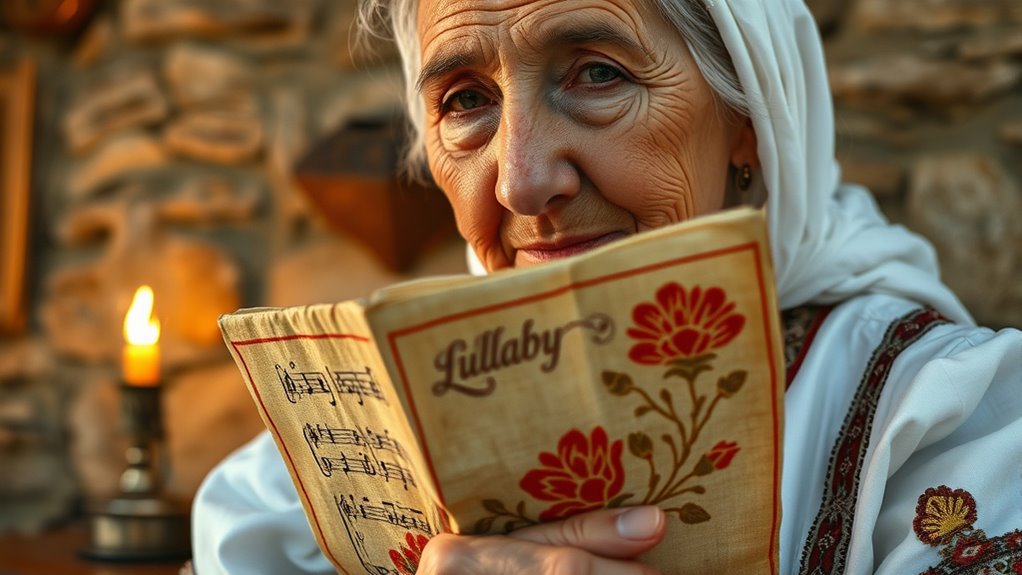
Performances of Sardinian lullabies and related polyphonic songs occur in both everyday and festive settings, highlighting their essential role in community life. In informal environments like local bars called *su zilleri*, singing fosters social bonds and reinforces cultural identity through *canto a tenore*. During special occasions such as weddings, sheepshearings, religious festivals, and regional carnivals like Barbaricino, these songs become part of communal rituals. Performances happen spontaneously or in structured events, adapting to community needs. They support daily routines, especially in pastoral life, and serve as tools for transmitting heritage and regional pride. Whether performed by groups of men in intimate circles or during public gatherings, these lullabies strengthen social cohesion and preserve cultural continuity across generations.
Preservation and Transmission Methods
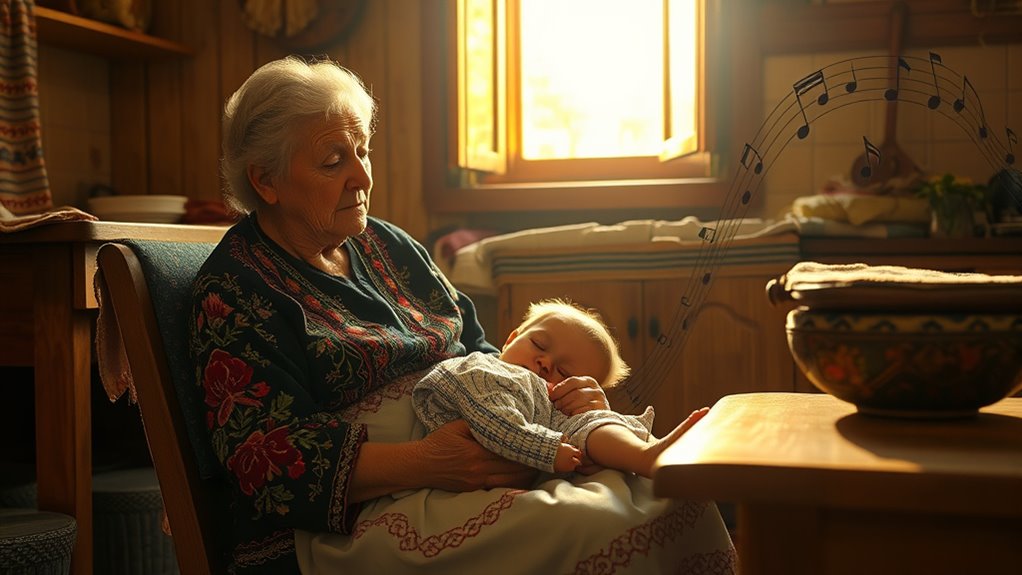
You can help preserve Sardinian lullabies by supporting efforts to record and archive them digitally, ensuring they reach future generations. While oral transmission remains essential, modern documentation helps capture lyrics and melodies before they fade. By engaging with these methods, you contribute to keeping this cultural tradition alive and accessible. Digital archiving provides a reliable way to store and share these songs widely. Additionally, understanding the importance of cultural preservation reinforces the value of safeguarding traditional songs for future audiences.
Oral Tradition Preservation
Preserving Sardinian lullabies depended heavily on a combination of oral, community, and material methods that guaranteed their transmission across generations. Mothers and elder women played crucial roles by directly teaching lullabies through daily interactions, ensuring the melodies and lyrics remained intact. Community gatherings, festivals, and poetic competitions like mutetu longu created lively spaces for sharing and reinforcing these songs, fostering collective memory. Early 20th-century transcriptions in libureddus offered tangible records, while mid-20th-century audio recordings with tape recorders allowed preservation beyond oral recall. The use of recording technology enabled the documentation of these songs for future generations. Repetitive melodies, poetic structures, and mnemonic devices like rhyme and rhythm made songs easier to memorize. Gestures, social routines, and regular practice embedded lullabies deeply into everyday life, securing their legacy through continuous performance. Additionally, cultural preservation methods continue to support the transmission of these oral traditions in contemporary Sardinian society.
Modern Documentation Efforts
Modern documentation efforts play a crucial role in safeguarding Sardinian lullabies for future generations. You’ll find these efforts include digitizing recordings, capturing vocal styles, regional dialects, and emotional nuances. Multimedia archives enable remote access for scholars and enthusiasts, often with detailed metadata about singers, locations, and lyrics’ context. Digital platforms encourage interactive engagement through annotations and cross-referencing with other Sardinian musical traditions. Universities and research institutions study lullabies’ musical structures and socio-cultural meanings, linking them to wider Mediterranean traditions. Community workshops involve elders teaching younger generations, ensuring authentic transmission. Additionally, social media, mobile apps, and online projects broaden reach, sharing recordings and stories globally. These combined efforts promote cultural preservation and foster a deeper understanding of Sardinian lullabies across generations. Emphasizing sound quality in recording techniques ensures that the emotional depth and authenticity of these lullabies are accurately preserved for posterity.
Regional Variations and Influences

You’ll notice that Sardinian lullabies vary considerably across regions, shaped by local singing styles and musical traditions. Dialects influence the lyrics and pronunciation, giving each area its unique voice. Instruments like launeddas also create regional soundscapes that reflect local cultural identities. Traditional music continues to influence contemporary compositions, keeping the regional sound vibrant and evolving. Additionally, the musical instruments used in these lullabies often carry symbolic meanings rooted in local folklore and history.
Regional Singing Styles
Regional singing styles in Sardinia showcase a rich tapestry of variations shaped by geography, history, and local culture. In Barbagia, cantu a tenòre features four male voices—*bassu*, *contra*, *boche*, and *mesu boche*—with guttural tones and overtone singing, often performed standing in circles. Gallura’s taja and Logudoro’s concordu differ in melodic structure, reflecting regional identities and cultural influences. The repertoire varies from serenades to dance songs and religious chants, with some regions emphasizing sacred music and others secular themes. The rugged terrain of Barbagia enhances echoic vocal techniques, while proximity to Mediterranean and Corsican cultures introduces additional stylistic influences. Regional traditions are also influenced by historical trade routes, which facilitated the exchange of musical styles and instruments. These variations preserve regional identities and adapt to local environments, ensuring the diversity of Sardinian singing endures across generations. Additionally, the influence of cultural exchange has helped maintain the unique characteristics of Sardinian vocal traditions despite modernization.
Dialectical Lyrics Variations
Sardinian lullabies are deeply shaped by the island’s diverse dialectal landscape, reflecting regional identities and local histories. You’ll notice differences between Campidanese in the south and Logudorese-Nuorese in the central-north, each with distinct lexical features that influence lyrics. The use of ‘literary Logudorese’ and ‘general Campidanese’ in literary contexts adds formal variation, while oral traditions preserve dialect-specific vocabulary. Phonological differences, like the trilled [r] or lenited [l], give each dialect unique sound textures. Lexical choices for words like “child” or “sleep” shift subtly across regions, embedding local cultural nuances. These variations reveal Sardinia’s linguistic richness, shaped by historical, social, and geographical factors, resulting in a diverse tapestry of lullaby lyrics. Sardinian has no standardized written form, which contributes to the regional diversity seen in these songs. Additionally, regional dialects influence the emotional tone and storytelling style of the lullabies, enriching their cultural significance.
Instrumental Differences Across Areas
Different areas of Sardinia showcase distinct instrumental traditions that reflect their unique cultural identities. In the south, launeddas dominate, with their complex melodic variations and deep drone, often used in religious and ritual contexts. Meanwhile, northern Sardinia favors lighter wind instruments like *sulitus* and *pipiolos*, which have different tonal qualities and are used in folk genres and community events. Percussion instruments, such as drums and triangles, vary regionally, influencing local dance styles like *su ballu*. In the north, guitars are prominent, especially in *cantu a chiterra*, contrasting with southern traditions that rely more on wind and drone instruments. These regional differences highlight Sardinia’s diverse musical landscape and its reflection of historical, ecological, and cultural influences across the island.
Contemporary Relevance and Challenges
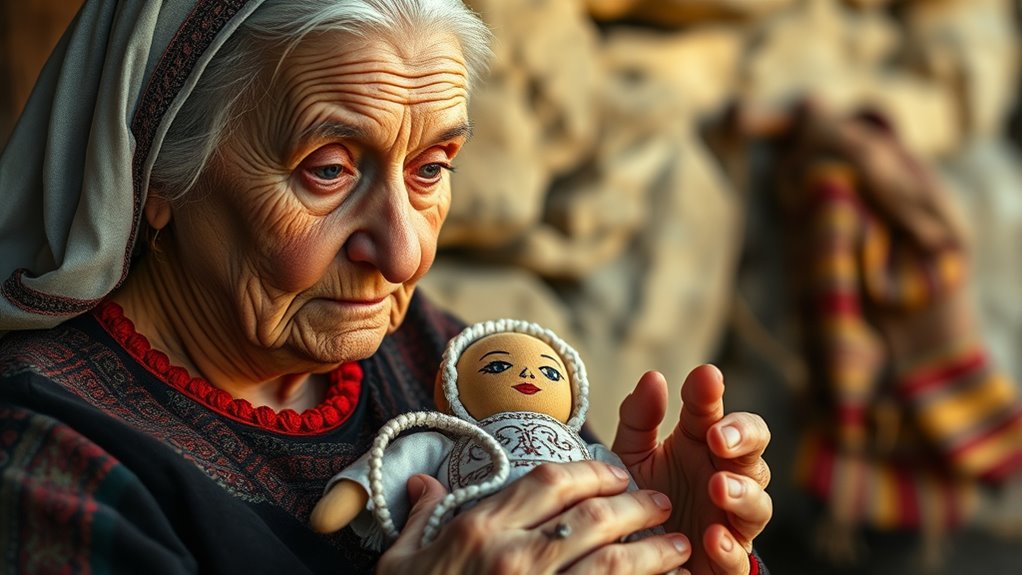
As traditional lullabies face the pressures of modernization and globalization, their cultural significance remains crucial for preserving local identity and heritage. You play an essential role in keeping these songs alive by supporting efforts to revive Sardinian language and musical traditions. These lullabies connect younger generations to Sardinia’s unique storytelling, poetry, and rhythms, strengthening community bonds. Despite challenges like language decline and reduced family transmission, digital archives and media initiatives help document and share these songs globally. However, modernization also introduces risks of hybridization and cultural loss. By engaging with festivals, educational programs, and online platforms, you can help guarantee that Sardinian lullabies continue to serve as a powerful symbol of cultural resilience and social cohesion in today’s changing world. Additionally, research shows that these songs embody collective memories and societal values that are vital for cultural continuity, ensuring that Sardinian heritage endures across generations.
Frequently Asked Questions
How Have Sardinian Lullabies Evolved Over Recent Generations?
You might notice that lullabies change over time, influenced by cultural shifts and new influences. Since these songs are passed orally, each generation adapts them, adding personal touches or modern themes. Without written records, it’s hard to trace exact changes, but you can see how urbanization, media, and education impact their preservation. Overall, they continue to evolve, blending tradition with contemporary life, reflecting what’s happening around you.
Are There Specific Lullabies Unique to Certain Sardinian Communities?
You wonder if certain Sardinian communities have their own unique lullabies. While specific lullabies aren’t extensively documented, it’s likely that each community has its own variations, shaped by local dialects, traditions, and geography. These lullabies serve as cultural markers, preserving local language and customs. By singing community-specific lullabies, you keep traditions alive, strengthening bonds and passing down stories that are as unique as the places they come from.
What Role Do Women Traditionally Play in Performing These Lullabies?
You see, women traditionally perform these lullabies to soothe children and express their emotions. By singing, you carry forward cultural memory, language, and traditions, often within female-only spaces. Your singing also acts as a form of resistance, voicing struggles and resilience. Through ritualistic and poetic elements, you strengthen communal bonds, preserve cultural identity, and connect with ancestral roots—making your role essential in maintaining Sardinian cultural continuity.
How Do Sardinian Lullabies Compare to Other Mediterranean Lullaby Traditions?
When comparing Sardinian lullabies to other Mediterranean traditions, you notice distinct themes, language, and functions. You see Sardinian lullabies express social hardship, critique absent husbands, and use ancient language, reflecting resilience. You observe other lullabies focus on protection, blessings, and spiritual safeguarding, often in regional dialects. You recognize Sardinian songs as emotionally complex, blending personal pain with cultural identity, standing apart through their social commentary, linguistic uniqueness, and dual purpose of soothing and voicing hidden frustrations.
Can Non-Sardinians Learn and Perform These Lullabies Authentically?
You might wonder if non-Sardinians can truly learn and perform these lullabies authentically. While dedicated effort helps, understanding the deep cultural meanings, emotional nuances, and traditional singing styles is essential. Relying solely on recordings or translations isn’t enough—you need immersion in Sardinian social contexts. Without this, your performance risks missing the lullabies’ protective and expressive roles, making genuine authenticity difficult to achieve.
Conclusion
As you explore Sardinian lullabies, you’ll discover they’re like a treasure chest of history and emotion, capturing centuries of culture in gentle melodies. These songs are more than just soothing sounds—they’re the heartbeat of Sardinia itself, echoing ancient stories and hopes. Preserving them is essential, or else we risk losing a musical universe more vast and intricate than the stars. Embrace these lullabies, and let their magic lull you into a timeless world.
